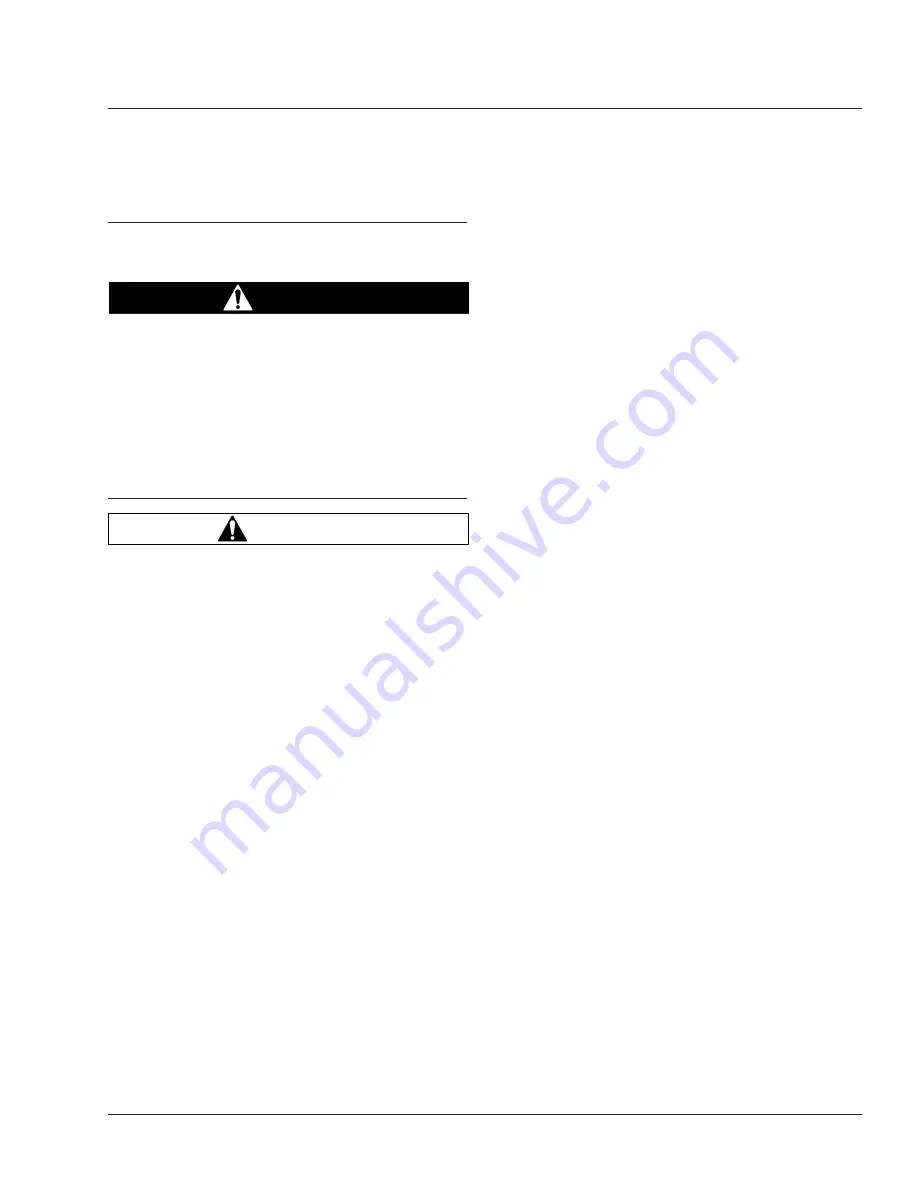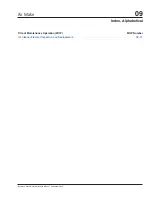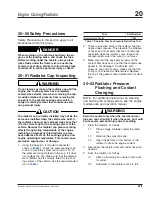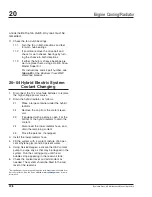
15–00 Safety Precautions
Safety Precautions in this section apply to all
procedures within this group.
DANGER
When working on the vehicle, shut down the en-
gine, set the parking brake, and chock the tires.
Before working under the vehicle, always place
jack stands under the frame rails to ensure the
vehicle cannot drop. Failure to follow these steps
could result in serious personal injury or death.
15–01 Alternator, Battery, and
Starter Checking
WARNING
Batteries release explosive gas as a by-product of
their chemical activity. Do not smoke when work-
ing around batteries. Put out all flames and re-
move any source of sparks or intense heat. Make
sure the battery compartment is completely
vented before disconnecting or connecting the
battery cables.
Battery acid is extremely harmful if splashed in
the eyes or on the skin. Always wear a face shield
and protective clothing when working around bat-
teries.
Damaged, chafed, or kinked wiring can cause
electrical short-circuits and lead to fires, causing
property damage, injury, or death. Clean, inspect,
and maintain wiring and connections carefully.
1.
Disconnect the batteries.
2.
Check the tightness of the alternator bracket fas-
teners; tighten the fasteners as needed. For
torque values, see
Group 15
of the
Business
Class® M2 Workshop Manual
.
3.
See
for belt tension specifications.
Check the alternator drive belt tension, using a
tension gauge at the belt’s longest span. Some
engines are equipped with more than one alter-
nator belt; check all of them for correct tension.
Adjust the belt tension if necessary.
Engines equipped with a serpentine or poly-V
belt have automatic belt tensioners, and do not
require belt tension inspection.
4.
Check that all electrical connections at the alter-
nator and starter are clean. Clean and tighten all
charging system electrical connections including
the connections at the starter B terminal and
ground terminal, and where the alternator charg-
ing cable terminates.
Trace and inspect all wiring and cables con-
nected to:
•
Alternator
•
Starter and depopulation studs
•
Batteries
•
Magnetic switch
•
Cab
•
Jump-start studs
•
Battery isolation relays
•
Battery shutoff switches
5.
Check wires and cables for wear, chafing, kinks,
discolored insulation, or loose clamps or ties.
Find the cause of any problems and repair, re-
place, and reroute wires and clamps as neces-
sary.
6.
Check the alternator wiring for missing insulation,
kinks, and heat damage. Replace or repair as
needed.
7.
On the bundled cable that runs from the batteries
to the starter, ensure that tie straps are installed
at least every 12 inches (300 mm). Replace any
missing tie straps, and add tie straps where
spacing between them exceeds 12 inches (300
mm).
8.
Ensure that all cables have sufficient slack to
allow for engine movement, and that there is no
pressure on any wiring connectors.
9.
If any convoluted tubing is damaged, check the
wiring inside it. Replace any damaged or missing
convoluted tubing.
10. Clean the cable connector terminals with a wire
brush. See
Group 54
of the
Business Class®
M2 Workshop Manual
for troubleshooting instruc-
tions, and for adjustment, repair, or replacement
instructions.
Alternators and Starters
15
Business Class M2 Maintenance Manual, August 2015
15/1
Summary of Contents for BUSINESS CLASS M2 100
Page 2: ......
Page 10: ......
Page 30: ......
Page 34: ......
Page 36: ......
Page 38: ......
Page 40: ......
Page 42: ......
Page 46: ......
Page 52: ......
Page 60: ......
Page 62: ......
Page 76: ......
Page 82: ......
Page 84: ......
Page 94: ......
Page 104: ......
Page 110: ......
Page 112: ......
Page 114: ......
Page 116: ......
Page 120: ......
Page 122: ......
Page 144: ......
Page 146: ......
Page 150: ......
Page 152: ......
Page 166: ......
Page 168: ......
Page 178: ......
Page 180: ......
Page 184: ......
Page 186: ......
Page 188: ......
Page 190: ......
Page 192: ......
Page 196: ......
Page 198: ......

































